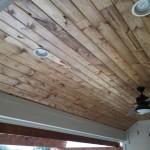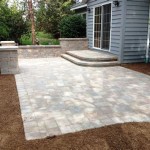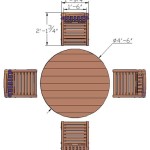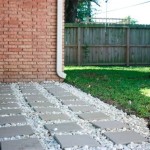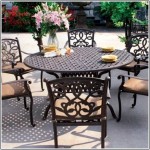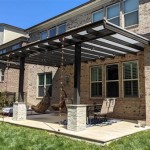Plastic Patio Stack Chairs: A Comprehensive Guide
Plastic patio stack chairs represent a ubiquitous and practical seating solution for outdoor spaces. Their affordability, durability, and stackable design make them a popular choice for residential patios, commercial establishments, and event venues. This article will explore the various aspects of plastic patio stack chairs, encompassing their material composition, design features, benefits, maintenance requirements, and considerations for selection.
The term "plastic" encompasses a vast array of synthetic or semi-synthetic materials exhibiting a wide range of properties. For patio furniture, including stack chairs, several types of plastic are commonly employed, each offering distinct advantages and disadvantages. Understanding these material characteristics is crucial for informed decision-making.
Polypropylene is a widely used thermoplastic polymer known for its resistance to chemicals, moisture, and fatigue. It is lightweight, relatively inexpensive to produce, and can be molded into complex shapes. However, polypropylene can be susceptible to degradation from prolonged exposure to ultraviolet (UV) radiation, leading to discoloration and brittleness. To mitigate this, manufacturers often incorporate UV inhibitors into the plastic formulation.
Polyethylene is another common thermoplastic polymer utilized in patio furniture manufacturing. High-density polyethylene (HDPE) is particularly favored for its strength, impact resistance, and resistance to cracking. Like polypropylene, polyethylene is resistant to moisture and many chemicals. It also offers good UV resistance, although the degree of resistance varies depending on the specific grade and additives used.
Acrylic materials, such as polymethyl methacrylate (PMMA), are sometimes used in patio furniture, although less frequently for stack chairs due to their cost. Acrylics are known for their exceptional clarity, weather resistance, and UV stability. They offer a high-end aesthetic and are often used in applications where visual appeal is paramount. However, acrylics can be more brittle than polypropylene or polyethylene and may be more susceptible to scratching.
Beyond the base plastic material, various additives are incorporated into the formulation to enhance specific properties. UV inhibitors, as mentioned earlier, are crucial for mitigating the degrading effects of sunlight. Stabilizers are added to prevent thermal degradation during processing and prolong the lifespan of the plastic. Color pigments are used to impart the desired aesthetic appearance. Fillers, such as calcium carbonate or talc, can be added to reduce cost and improve stiffness.
The design of plastic patio stack chairs profoundly impacts their functionality, comfort, and aesthetic appeal. The basic design elements include the seat, backrest, legs, and any supporting structures. Ergonomics plays a crucial role in ensuring comfortable seating for extended periods.
The seat of a plastic patio stack chair can be flat, contoured, or feature a woven design. Contoured seats provide better support for the thighs and buttocks, reducing pressure points. Woven designs, often made from plastic straps or resin wicker, offer breathability and a more relaxed aesthetic. The seat height should be appropriate for most users, typically around 16 to 18 inches from the ground.
The backrest provides support for the back and shoulders, contributing significantly to comfort. Backrests can be solid, slatted, or woven. Slatted backrests allow for airflow, keeping the user cooler in warm weather. The height and angle of the backrest should be designed to promote good posture. Some chairs feature lumbar support, which can enhance comfort for those with back pain.
The legs of a plastic patio stack chair must be sturdy enough to support the weight of the user. They are typically made from the same plastic material as the rest of the chair. The leg design can vary significantly, from simple straight legs to more elaborate curved or splayed legs. The legs should be designed to prevent tipping and provide stability on uneven surfaces. Some chairs feature adjustable feet to compensate for minor variations in ground level.
The stackable design is a key feature of these chairs. The design should allow the chairs to nest securely together, minimizing the space required for storage. The stack height should be reasonable, allowing for easy handling and transportation. The stacking mechanism should not damage the chairs when they are stacked or unstacked.
Affordability and Cost-Effectiveness
One of the primary advantages of plastic patio stack chairs is their affordability. Compared to chairs made from other materials, such as wood, metal, or wicker, plastic chairs are generally less expensive to manufacture and purchase. This makes them an attractive option for individuals and businesses on a budget. The cost-effectiveness extends beyond the initial purchase price. Plastic chairs require minimal maintenance, reducing the ongoing expenses associated with cleaning, repairing, or refinishing. Their durability also means they are less likely to need replacement, further contributing to long-term cost savings.
The relatively low cost makes plastic patio stack chairs a practical solution for outfitting large outdoor spaces, such as patios, decks, and pool areas. Businesses, such as restaurants and cafes, can benefit from the affordability of plastic chairs when furnishing outdoor seating areas. Event venues can also utilize plastic chairs for temporary seating arrangements without incurring significant costs.
Durability and Weather Resistance
Plastic patio stack chairs are inherently resistant to moisture, making them ideal for outdoor use. Unlike wood or metal chairs, they will not rot, rust, or corrode when exposed to rain, humidity, or saltwater. This inherent resistance to the elements significantly extends the lifespan of the chairs, reducing the need for frequent replacement. The inclusion of UV inhibitors in the plastic formulation further enhances their weather resistance by preventing degradation from sunlight, a crucial factor for outdoor furniture.
The durability of plastic chairs extends beyond weather resistance. They are also resistant to many chemicals, including cleaning agents and spills. This makes them easy to clean and maintain, preserving their appearance over time. The impact resistance of certain plastics, such as HDPE, also contributes to their durability, making them less susceptible to damage from accidental bumps or drops. The combination of weather resistance and overall durability makes plastic patio stack chairs a practical and long-lasting seating solution for outdoor environments.
Ease of Maintenance and Cleaning
Maintaining plastic patio stack chairs is remarkably simple, requiring minimal effort and time. Unlike wood or metal chairs that may require regular painting, staining, or rust removal, plastic chairs generally only need occasional cleaning. Spills and dirt can be easily wiped away with a damp cloth or sponge. For more stubborn stains, a mild soap solution can be used. Pressure washing can also be employed to remove dirt and grime from textured surfaces or intricate designs. The non-porous nature of plastic prevents the absorption of liquids, making it resistant to staining and odors.
The ease of maintenance translates to significant time and cost savings. Individuals and businesses can spend less time cleaning and maintaining their patio furniture, freeing up valuable resources for other tasks. The minimal maintenance requirements also contribute to the long-term aesthetic appeal of the chairs, ensuring they remain visually appealing for years to come. The combination of easy cleaning and minimal maintenance makes plastic patio stack chairs a practical and convenient choice for outdoor seating.
When selecting plastic patio stack chairs, several factors should be considered to ensure the chosen chairs meet specific needs and preferences. These factors include the type of plastic, the design, the comfort level, the weight capacity, and the overall aesthetic appeal.
The type of plastic is a crucial consideration. Polypropylene is a good choice for general-purpose use, offering a balance of affordability and durability. HDPE is a better choice for applications requiring high strength and impact resistance. Acrylics, while more expensive, offer exceptional clarity and weather resistance.
The design of the chair should complement the overall aesthetic of the outdoor space. A wide range of designs are available, from simple and minimalist to more elaborate and decorative. Consider the style of the patio, deck, or garden when selecting the chair design.
Comfort is paramount, especially if the chairs will be used for extended periods. Look for chairs with contoured seats, supportive backrests, and appropriate seat height. Consider the weight capacity of the chair, ensuring it can comfortably accommodate all users.
The stacking mechanism should be easy to use and allow the chairs to nest securely together. The stack height should be manageable for handling and storage. Consider the overall weight of the chairs, especially if they will be frequently moved or transported.
Finally, consider the overall aesthetic appeal of the chairs. Choose chairs that complement the existing outdoor furniture and surroundings. A wide range of colors and styles are available, allowing for customization and personalization.

Cosco White Stackable Plastic Outdoor Lounge Chair 2 Pack 87531wht2e The Home Depot

San Diego Stackable Plastic Patio Dining Chairs Set Of 4 Pli 4valenside Wht The Home Depot

Gracious Living Cayman Sandstone Plastic Stack Chair Big Lots

Plastic Resin Patio Chairs Stackable Cafe Seating Astm Tested For Strength And Durability Furniture Leisure

Adams Pea Outdoor Resin Stack Chair With Phone Holder Plastic Patio Furniture Gray Com

Grosfillex Resin Chairs National Outdoor Furniture

Patio Chair White Stackable Plastic Outdoor Seat Backyard Porch Deck Furniture 4 Pack Metro Market

Cosco Gray Stackable Plastic Outdoor Lounge Chair 2 Pack 87532gry2e The Home Depot

Outdoor Stackable Chair Dining Furniture Seating Cafe Plastic White

Adams Manufacturing Stackable Gray Resin Frame Stationary Dining Chair S With Solid Seat In The Patio Chairs Department At Com

